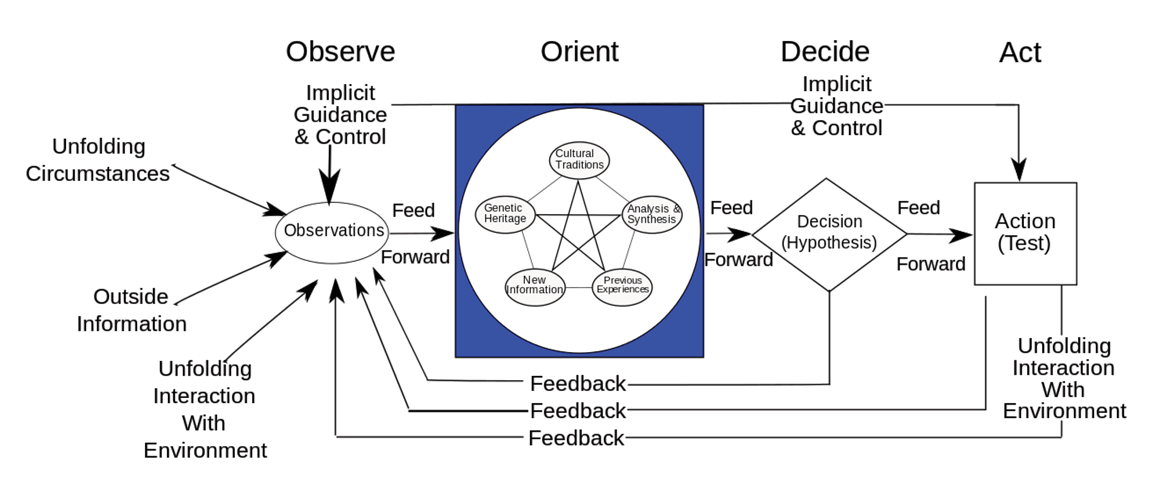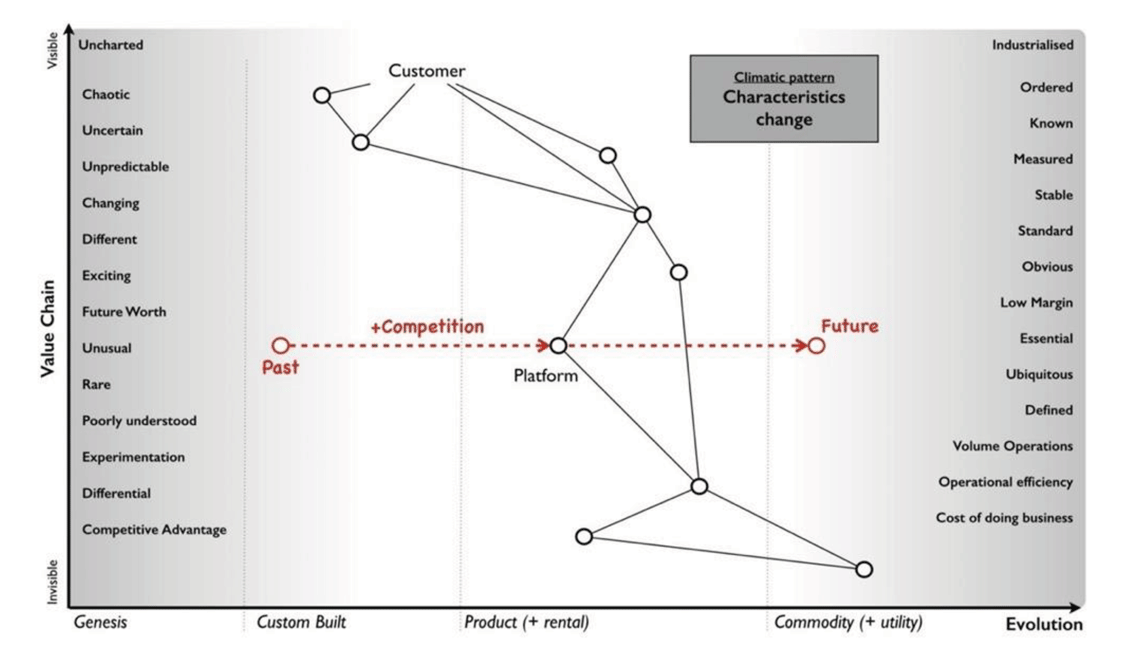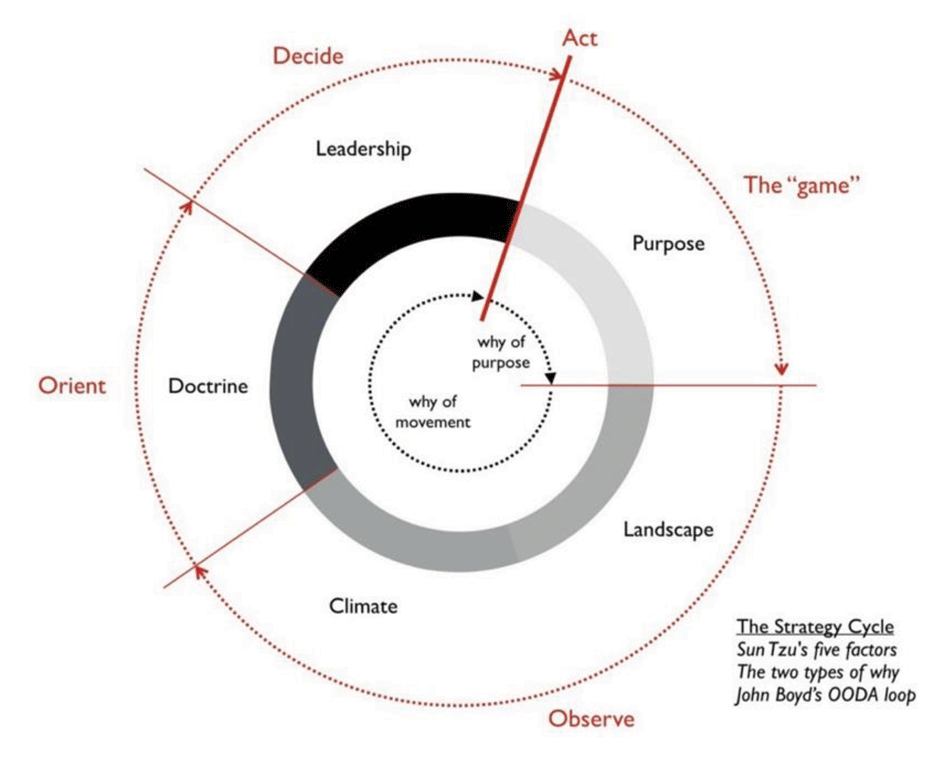What is strategy, and is it useful for business? Business schools want you think it is the critical factor in competitive success or failure. They teach structured markets, divided up by market share, with boundaries and external and internal forces to be assessed and countered. “Where to play and how to win.” They see strategy through their lens of financialization and utilize fictitious economic calculations like discounted future cash flows and market capitalization. There’s very little Austrian flavor in their view — no acknowledgement of subjective value and the qualitative drivers of value, customer sovereignty, empathy, constantly changing customer preferences, no role for the entrepreneur in helping customers learn what they can want in an evolving world.
Topics:
Hunter Hastings considers the following as important: 6b) Mises.org, Featured, newsletter
This could be interesting, too:
Nachrichten Ticker - www.finanzen.ch writes Die Performance der Kryptowährungen in KW 9: Das hat sich bei Bitcoin, Ether & Co. getan
Nachrichten Ticker - www.finanzen.ch writes Wer verbirgt sich hinter der Ethereum-Technologie?
Martin Hartmann writes Eine Analyse nach den Lehren von Milton Friedman
Marc Chandler writes March 2025 Monthly
What is strategy, and is it useful for business? Business schools want you think it is the critical factor in competitive success or failure. They teach structured markets, divided up by market share, with boundaries and external and internal forces to be assessed and countered. “Where to play and how to win.” They see strategy through their lens of financialization and utilize fictitious economic calculations like discounted future cash flows and market capitalization. There’s very little Austrian flavor in their view — no acknowledgement of subjective value and the qualitative drivers of value, customer sovereignty, empathy, constantly changing customer preferences, no role for the entrepreneur in helping customers learn what they can want in an evolving world.
Our guest Erik Schön provides us with an entirely different view of strategy, which he arrives at via a synthesis of three great strategists: Sun Tzu, John Boyd, and Simon Wardley.
Knowledge Capsule
Strategy is how to survive and thrive and, for a business, the key tool is harmonization.
Sun Tzu identified Purpose as the fundamental factor that keeps people united: customers, producers, suppliers, partners, owners, executives, employees, supporting each other without fear through success and failure.
In Sun Tzu, there are four more fundamental factors:
- Landscape — your business environment.
- Climate: the forces acting on the environment.
- Doctrine: ways of operating.
- Leadership: actions, decisions, choices, and gameplays.
| Master all five to succeed, or else fail.
John Boyd added the dynamics of continuously changing intentions within the pursuit of the realization of purpose. (We find reflections here of Mises’ concept of constant flux — everything changing all the time.) Boyd’s definition of strategy Is a mental tapestry of changing intentions for harmonizing our efforts to realize purpose in a world that can be bewildering. The purpose of strategy is to improve our ability to adapt: a vision that magnifies the strength and commitment of its adherents, and a grand ideal or noble philosophy providing a binding paradigm for all. Boyd’s famous framing of the learning process to develop the ability to adapt is the OODA Loop. For Wardley, strategy is the art of moving in and manipulating an environment using tools such as positioning and technological innovation. Wardley’s major contribution is to visualize strategy in the form of a map where the X-axis is movement in the environment in predictable steps: Genesis: a new technology or solution or brand is introduced; it’s unique. |
|
| The automobile industry provides an example.
Genesis: the first internal combustion engine. Wardley’s approach is that all markets exhibit this evolution. It’s important to know the current landscape and predict the future landscape, moving through it with “the why of purpose” (to survive and thrive) and “the why of movement” (taking a particular action that moves you through the landscape). Everything evolves through supply and demand competition. |
|
The Sun Tzu, Boyd and Wardley approaches to strategy can be combined in the concept of the Strategy Cycle, Strategists move continually through the phases and components.
The reference to these strategy masters enables businesses to move beyond business school strategy.Move beyond strategy as wars, battles and combat for market share, towards strategy as individuals, teams and organizations fulfilling their shared purpose. Move beyond strategy for survival in competitive environments to sustainably thriving in a world with a high rate of change. Move beyond strategy development as planning, metrics and data towards strategy development for a harmonized direction based on regular assessment of needs (especially customers’ needs) and the organization’s purpose. |
Move beyond strategy development as execution and chasing targets to decisions and actions in a harmonized direction by everyone everywhere in the organization based on high situational awareness.
Move beyond business as maximizing shareholder value to business as succeeding together with customers and other stakeholders.
Move beyond leadership for managers and people in hierarchical leader roles to leadership as a service provided by all people in the organization.
Move beyond practices and principles for optimizing parts to harmonizing the whole.
The art of strategy is to succeed by securing harmony among stakeholders, and keeping competition off-balance through evolving better capabilities to influence, adapt and map.
The three strategists offer complementary views of strategic success.
Sun Tzu:
Unite society rather than divide.
Unite the organization rather than divide.
Unite the team rather than divide.
Make the organization resilient by cultivating purpose and doctrine.
Boyd:
A grand ideal, overarching theme, or noble philosophy that individuals can shape and adapt to unfolding circumstances.
Wardley:
Know your user — know your customers and know how to create value through meeting their needs.
Set exceptional standards.
Be resilient to cope with a wide variety of extremes and changes by rapidly adapting.
The great obstacle to adaptiveness in strategy is inertia in its various forms.
Success breeds inertia, and inertia kills. It’s rarely a lack of innovation that kills companies, but rather inertia caused by pre-existing business models. Any past success with any component or element will tend to create a resistance to change. Inertia is a loss of capital — whether physical, human, social, or financial.
Strategists look to identify different categories of inertia and devise ways to counter them.
| Category of inertia | Counterpoint |
| People resist disruption of past norms |
|
| Fear of transition to the new |
|
| Are we sure we can make the new work? |
|
| Changing business models is hard |
|
Leading without pressure and control.
Erik uses the gardening analogy to illustrate the Sun Tzu style of leading without pressure and control. The gardener tends the garden gently, tilling and planting and watering ahead of time, and the flowers grow. Today we might call this style “self-organization”.
The three strategists are very consistent with the action-focused approach to entrepreneurship from Austrian economics. Action is learning. The path is made by walking. Try things out. Draw some Wardley maps as a trial. They’ll take you a long way.
Additional Resources
The Art of Strategy: Steps Towards Business Agility by Erik Schön: Mises.org/E4B_207_Book1
The Art Of Leadership: Purpose and Integrity for Sustainable Success by Erik Schön: Mises.org/E4B_207_Book2
Erik Schön on LinkedIn: Mises.org/E4B_207_LinkedIn
A Collection of Wardley Maps: Mises.org/E4B_207_Maps1
A Wardley Map of the Automobile Industry: Mises.org/E4B_207_Maps2
Tags: Featured,newsletter



